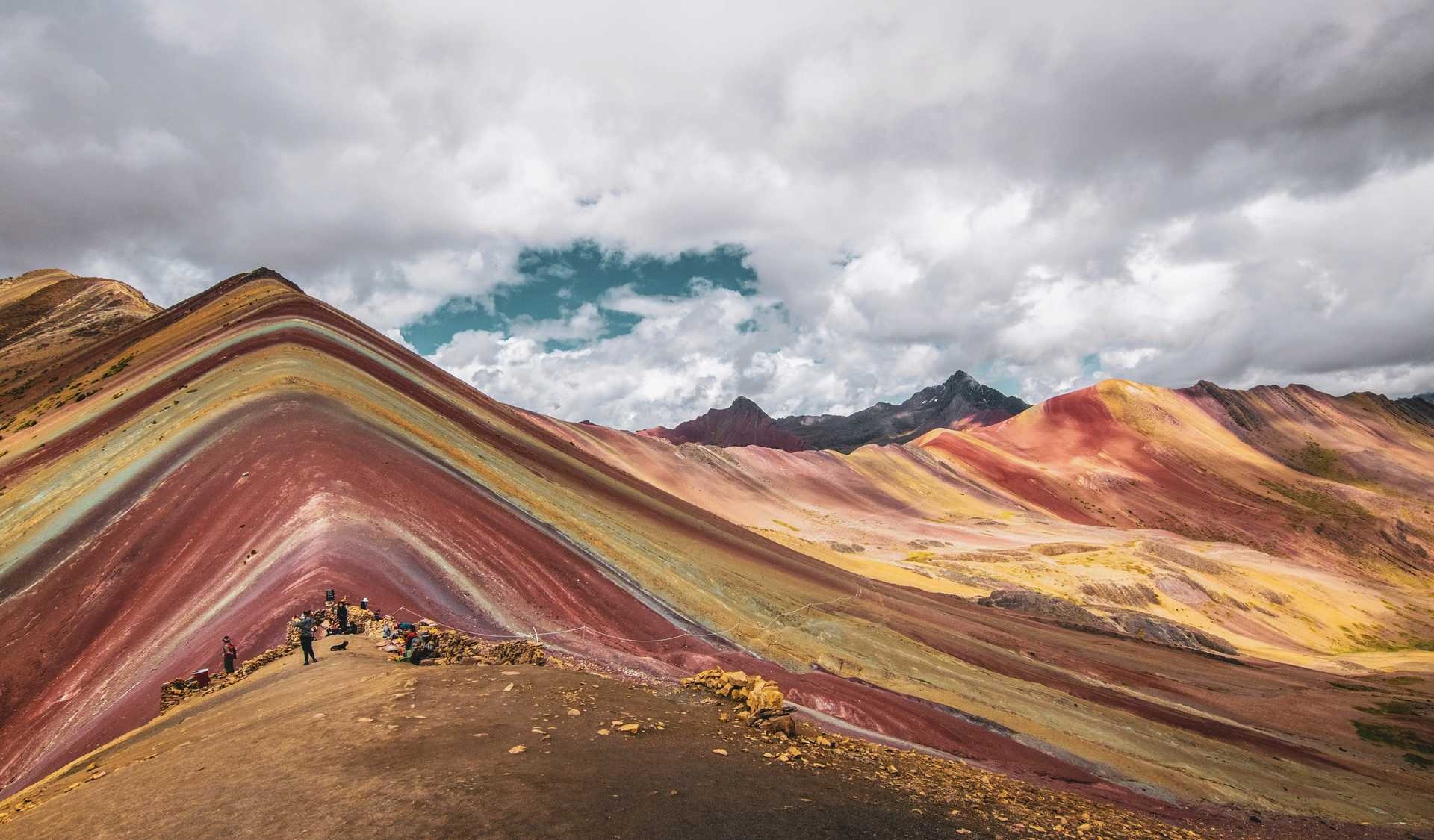Rainbow Mountain, or Vinicunca, sits at a staggering 5,200 meters. Hikers flock to it for its vibrant mineral bands and high-altitude views.
At such elevation, oxygen levels drop significantly, making altitude sickness a serious risk.
Proper preparation becomes essential not just for comfort but for safety.
With the right steps, visitors can avoid common pitfalls and enjoy the trek with confidence and health intact.
Altitude Sickness
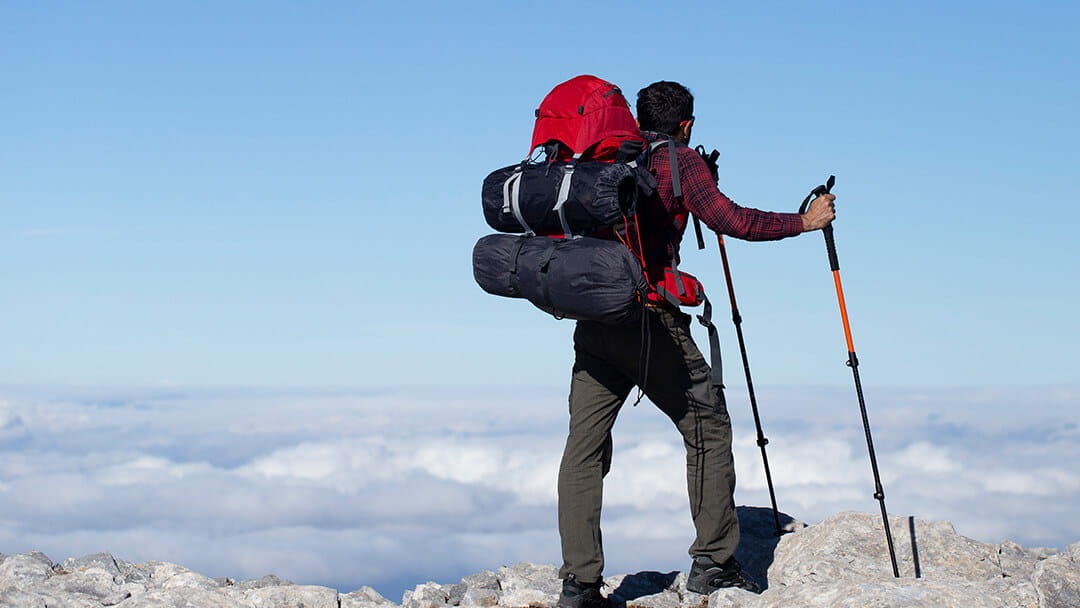
Altitude sickness, clinically referred to as Acute Mountain Sickness (AMS), arises when the body struggles to adapt to reduced oxygen levels at higher elevations.
Common symptoms include headaches, nausea, dizziness, shortness of breath, and fatigue.
Those coming directly from sea level or suffering from pre-existing heart or lung conditions are particularly vulnerable.
Acclimatization plays a critical role. Allowing the body to gradually adjust to higher altitudes can prevent AMS entirely.
Ignoring these early signs or pushing through without rest increases risks of severe complications like high-altitude cerebral edema (HACE) or pulmonary edema (HAPE). Respect for the body’s limits ensures a safer and more enjoyable experience.
Emergency Measures and Remedies
Carrying small, portable oxygen canisters helps in case symptoms become overwhelming. Guides usually bring oxygen tanks and first-aid kits, but having a personal backup is smart.
At the first signs of serious illness, intense nausea, confusion, chest pain—descending becomes the only solution. Elevation must be lowered immediately to stabilize the body. No photo is worth risking health.
Travelers should confirm that their tour company is properly equipped. Asking about medical supplies and emergency protocol during booking adds another layer of safety.
Even an AI detector wouldn’t spot symptoms before they strike, so human vigilance remains critical.
Pre-Trek Preparation

Before setting foot on Rainbow Mountain, solid preparation is not just helpful—it’s critical.
Many travelers underestimate the intensity of high-altitude hiking, which can quickly lead to discomfort or even serious medical complications.
Fortunately, with the right actions taken in advance, the body can be trained to handle the oxygen drop more efficiently.
Acclimatize in Cusco or Sacred Valley
Altitude is no joke. Jumping straight into a 5,200-meter trek without adjustment is asking for trouble. Spending a few days in a high-altitude location allows the body to slowly adapt, easing the transition and reducing the shock that comes with thinner air.
Smart acclimatization steps include:
- Arrive in Cusco (3,400 meters) or Sacred Valley at least 2–3 days before the hike.
- Choose low-exertion activities such as city walks, light hikes, or cultural visits during the initial days.
- Sleep well, stay hydrated, and eat clean to give your body the best chance to adapt.
- Avoid strenuous workouts, alcohol, and caffeine during these first days.
Pushing Rainbow Mountain to the beginning of a Peru itinerary is a recipe for AMS. Moving it to the middle or end lets travelers enjoy the hike more confidently.
Consult a Doctor if Necessary
High altitude puts extra pressure on the cardiovascular and respiratory systems. Those already living with medical conditions should not guess how their body might react at over 5,000 meters.
Before traveling, it’s wise to:
- Speak to a physician about personal risks, especially if living with heart or lung issues.
- Ask about acetazolamide (Diamox), a medication commonly prescribed to prevent altitude sickness.
- Understand how existing medications interact with changes in pressure and oxygen availability.
- Pack medications in easily accessible, labeled containers for fast use on the trail.
Even healthy individuals benefit from discussing high-altitude risks with a medical professional.
Carrying altitude medication and a basic first-aid kit can help stop a minor issue from becoming a trip-ending event.
During the Trek: Best Practices to Avoid Altitude Sickness
Preparation doesn’t stop once the trail begins. Staying alert and adjusting behavior along the hike keeps symptoms away and energy up.
Oxygen continues to decrease as elevation rises, and the body must work harder to maintain basic functions. Simple actions can make a big difference.
Stay Hydrated
Dehydration strikes faster at altitude due to increased respiration and dry mountain air. Drinking water regularly supports circulation, digestion, and oxygen delivery to muscles.
Travelers often feel fatigued without realizing low hydration is the cause.
Hydration tips for the trail:
- Aim for at least 2 liters of water per day.
- Avoid alcohol, which worsens dehydration and disrupts sleep.
- Limit caffeine, especially in coffee or energy drinks.
- Sip coca tea or chew coca leaves, which are traditionally used by locals to combat AMS.
Carry a reusable bottle and take sips every 10–15 minutes, even if not thirsty. Dehydration is sneaky and shows up once energy is already fading.
Eat Properly
Nutrition affects endurance and overall performance at high elevation. Heavy meals take more effort to digest and can slow the body down.
Carbohydrates are easier to process and provide quick, accessible energy.
High-altitude eating advice includes:
- Choose light, high-carb meals like quinoa, fruit, rice, and vegetables.
- Avoid greasy or fried foods that sit in the stomach and make activity harder.
- Snack throughout the hike with granola bars, trail mix, or crackers.
Start with a solid breakfast before the trek, and bring snacks that are easy to access without stopping too long.
Take It Slow
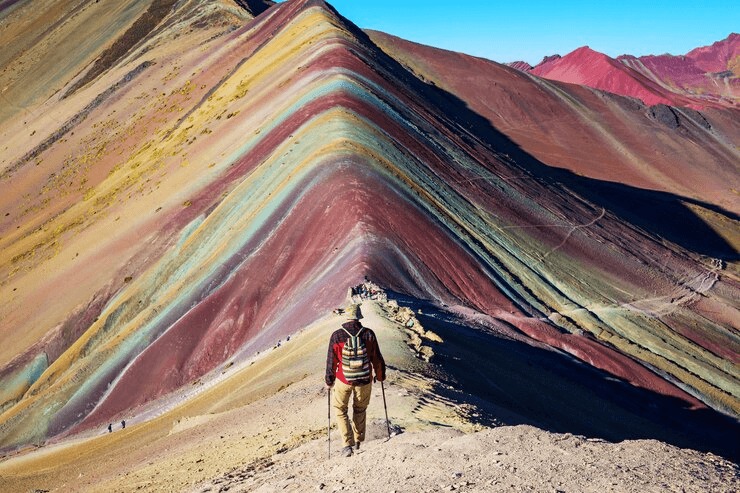
Rushing up the mountain is a guaranteed way to get winded and overwhelmed. Slower movement reduces strain and gives the body time to adapt at each stage of elevation gain.
Effective pacing methods include:
- Take small, steady steps instead of large strides.
- Rest briefly every 15–20 minutes to catch your breath.
- Use breathing techniques like exhaling longer than you inhale to calm the heart rate.
- Pause to look around, not just for the view but for recovery.
Consistent pacing transforms a demanding hike into a manageable climb.
Dress Appropriately
Weather conditions on Rainbow Mountain are as unpredictable as they are extreme.
Early morning cold gives way to midday heat, followed by sudden rain or wind. Clothing that adapts to changing conditions protects both comfort and health.
Packing list essentials include:
- Moisture-wicking layers to prevent sweat chills.
- Windproof and waterproof jacket.
- Gloves and thermal hat.
- Hiking boots with ankle support and solid grip.
- Sunglasses and sunscreen to protect against UV at altitude.
Dress like the weather will turn at any moment—because it probably will. Proper gear also reduces risk of injury on uneven, muddy paths.
Alternative Options to Ease Physical Strain
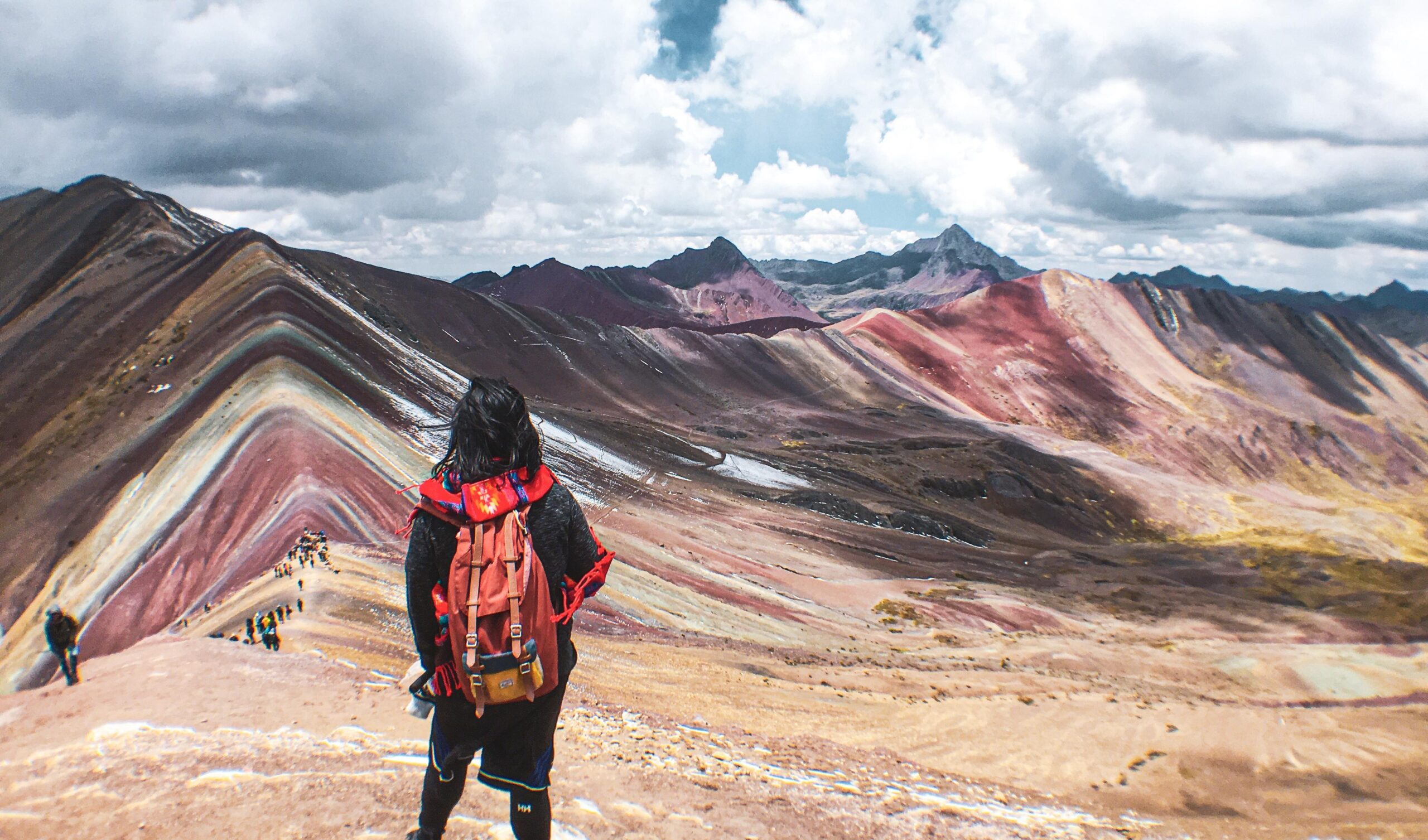
Climbing Rainbow Mountain isn’t just about endurance; it’s about making smart choices that suit individual limits.
Some travelers, especially those short on time or facing acclimatization challenges, may find the physical demand too much.
That doesn’t mean missing out. Alternative options exist that allow visitors to enjoy the stunning views with less physical burden.
Horseback Riding
For those feeling the early signs of altitude sickness or unsure about stamina, horseback riding offers a practical and culturally rooted alternative.
Local communities around Rainbow Mountain provide horses to support travelers during the climb.
Many visitors who underestimate the altitude are grateful to have this option available on the trail.
Key facts about horseback riding on Rainbow Mountain:
- Horses can typically be hired at the trailhead or along the route.
- Rates range between 60–100 soles (approximately $15–$25 USD), depending on season and demand.
- Horses usually take visitors most of the way, though a short walk to the summit is still required.
- Riders should wear warm, layered clothing and secure backpacks properly.
- Cash payment is standard, so bring small bills for easier transactions.
Local horse handlers guide the animals carefully and are familiar with the terrain.
Choosing this option supports the local economy while ensuring that visitors don’t sacrifice their health trying to power through.
ATV (Quad Bike) Tours
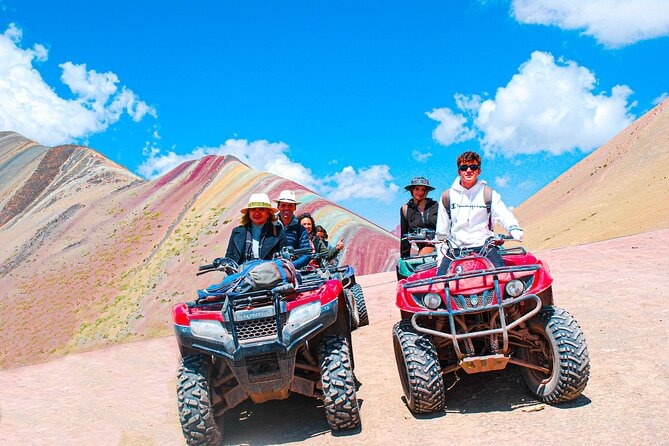
ATV tours have recently gained attention as a thrilling and less labor-intensive way to experience Rainbow Mountain.
These off-road vehicles provide a powerful alternative for reaching elevated viewpoints without the hours of hiking.
For adventure seekers or those with limited time, it’s an efficient and enjoyable choice.
Highlights of choosing an ATV tour include:
- Tours typically include hotel pickup in Cusco, ATV rental, safety gear, and guide services.
- Prices are slightly higher than horseback options but include transport and logistics.
- Trails used by ATVs are different from the main hiking path to reduce congestion.
- Most tours feature several scenic stops for photos and rest.
- Helmets and gloves are provided, but dressing in layers is still necessary due to changing weather.
While ATVs may not offer the same sense of achievement as hiking, they allow more people to witness the mountain’s vivid colors without exhaustion.
It’s a suitable option for those traveling with children, seniors, or anyone looking to avoid overexertion at high altitudes.
The Bottom Line
Rainbow Mountain rewards preparation. At over 5,000 meters, it challenges the body but offers unforgettable beauty in return.
With proper acclimatization, smart pacing, and respect for health signals, the hike becomes not just manageable but memorable.
Listen closely to the body, stay prepared, and embrace every step toward the summit.

